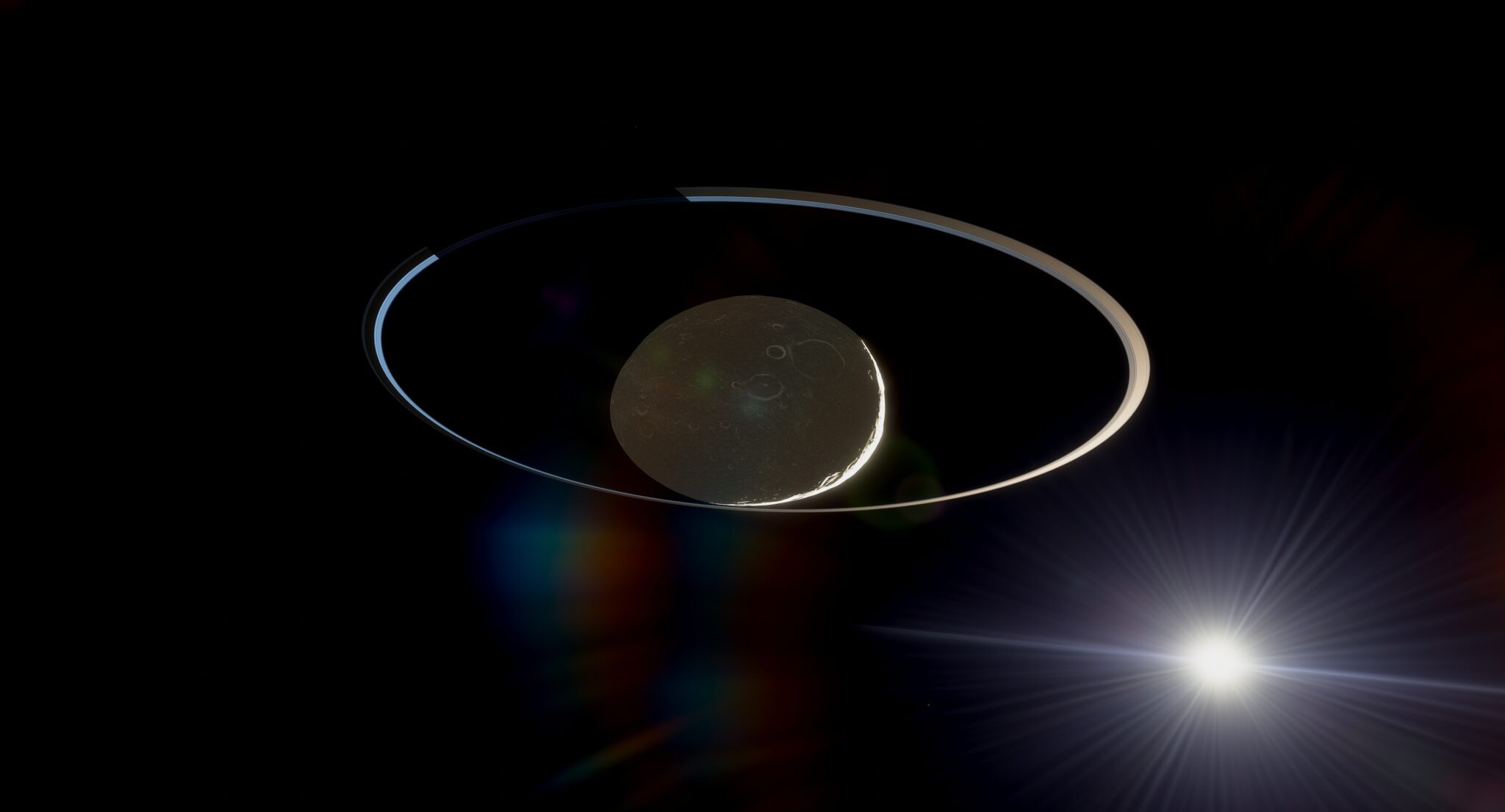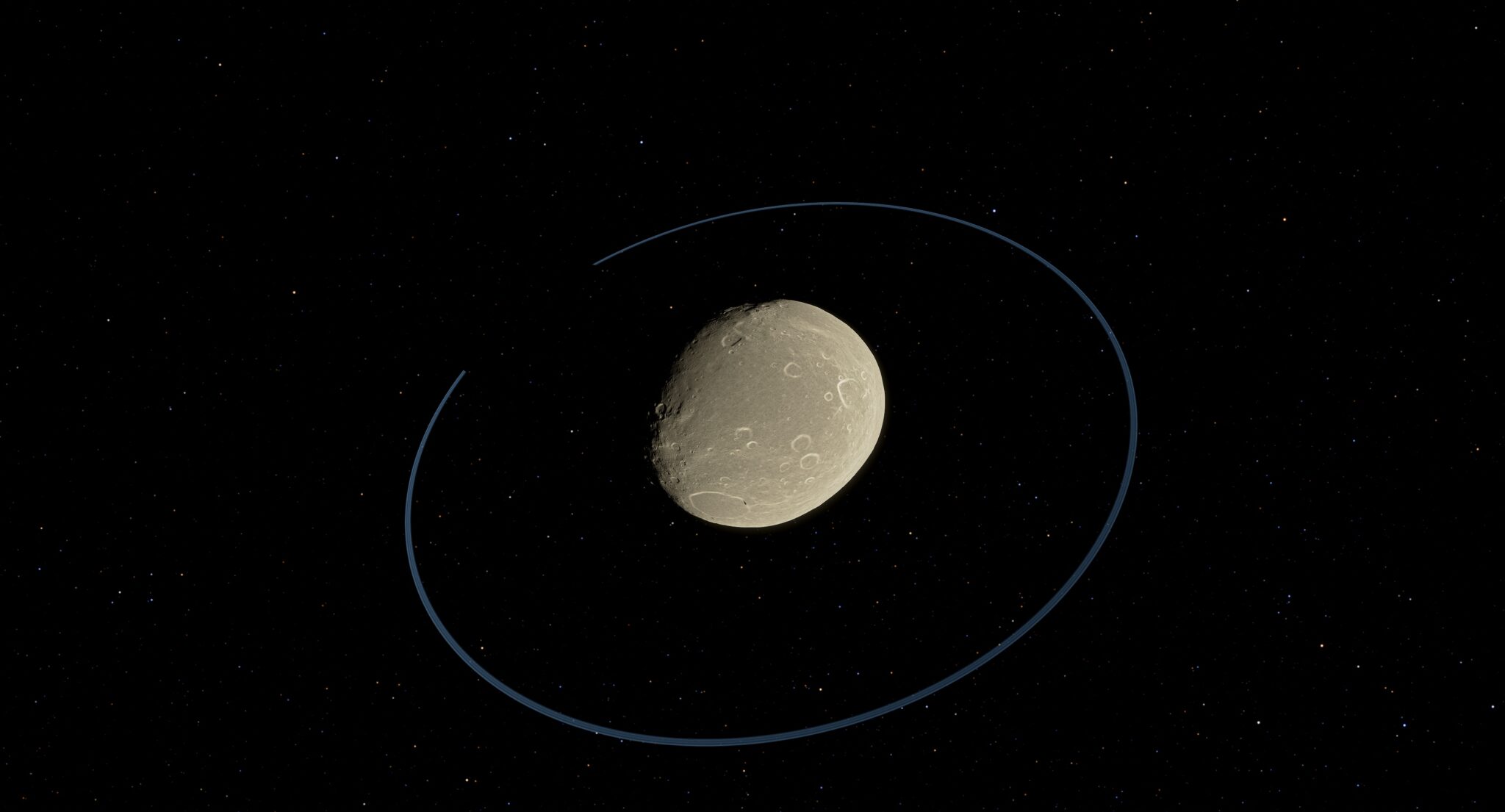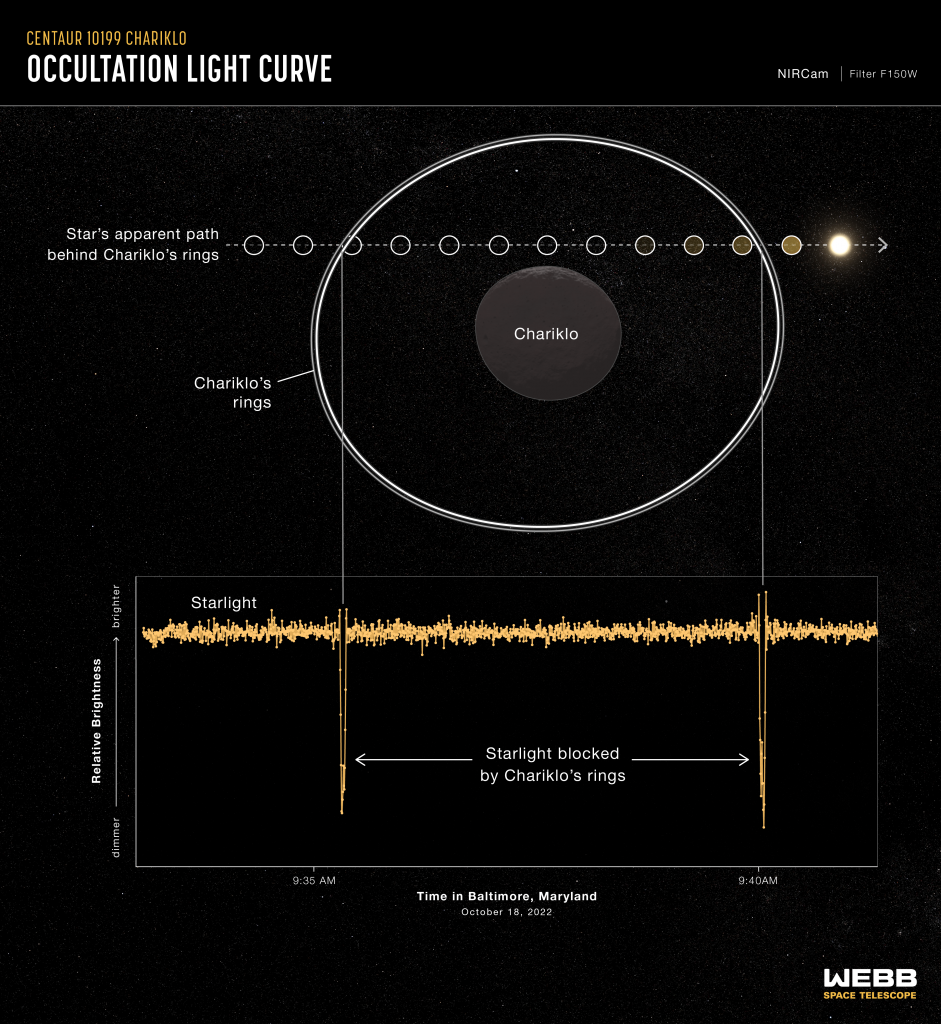The newly discovered moon, which is invisible from Earth, may have an important role in the formation of rings around 10199 Chariklo, a small asteroid orbiting between the orbits of Saturn and Uranus. This conclusion is made by a team of astronomers who have studied the dynamics of these rings.

10199 Chariklo is one of the Centaurs, a group of icy bodies beyond Jupiter. With its size of about 300 km across, it is defined as the largest of this group. Two rings were also noticed near the object, first discovered in 2013, which were then examined in more detail by James Webb. The width of the first ring is 6-7 km, and the second is 2-4 km, they are separated by a gap of 9 km.

A recent study published in The Planetary Science Journal indicates the possibility that the moon is responsible for the formation and retention of the 10199 Chariklo rings. The team used an N-body simulation, simulating the motion of millions of particles that make up the rings. According to the results of the study, the moon in orbit of Chariklo should have a diameter of about 6 km. Its gravitational influence may be a key element holding the rings in a delicate shape, as planetary rings tend to dissipate over time.

Scientists have also determined that the Centaur rings are at the limit of the minimum distance from the body on which they are formed. Below this limit, the material of the rings begins to fall on the object under the influence of gravity.
Amanda Sikafuz, the lead author of the study, notes that the mechanisms of ring formation around small objects have not yet been properly investigated. This work provides a possible mechanism for the formation of thin rings, namely the influence of a moon.

For further research, new observations are needed to confirm the presence of the moon and its effect on the rings of 10199 Chariklo. The capacity of current telescopes is not enough to detect it. Therefore, a new space mission or indirect research methods may be needed to solve this mystery.
Earlier, we reported on how rings were found in a candidate for a dwarf planet.
According to gizmodo.com
Follow us on Twitter to get the most interesting space news in time
https://twitter.comne/ust_magazi


